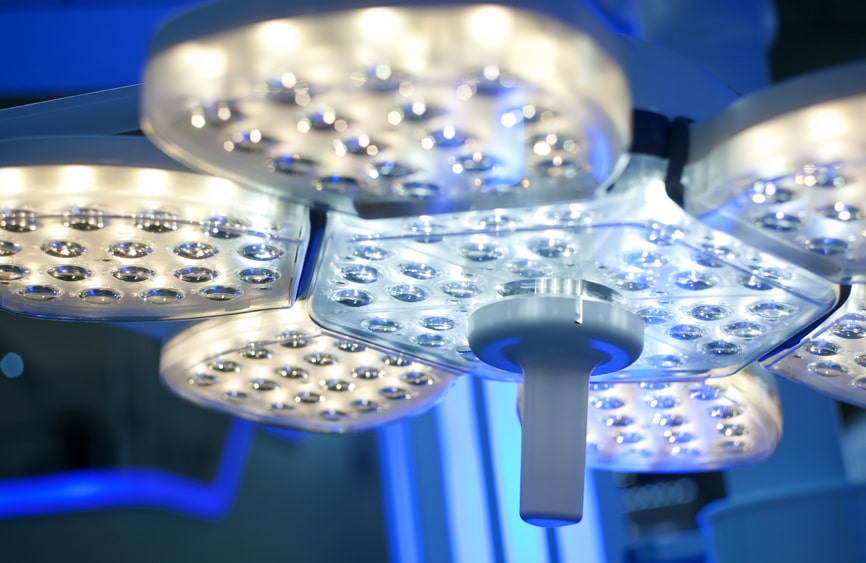
Spine Surgeon Dr. Jazini Places Among First in World to place 100th Pedicle Screw in Spinal Fusion Surgery Utilizing Augmented Reality
March 10, 2021 – Reston, Virginia – Spine Surgeon Dr. Jazini becomes among the first in the world to place the 100th pedicle screw in spinal fusion surgery utilizing augmented reality technology to do this more safely and efficiently.
Spine Surgeon, Dr. Ehsan Jazini of VSI is one of the first in the world to place 100 pedicle screws using Augmented Reality technology in spinal fusion surgery, marking a monumental milestone in the advancement of spine surgery.
“It is a privilege and honor to be able to pioneer new technologies that help me do what is my lifelong goal—which is to help patients get back to doing what they love”, comments Dr. Jazini. “This type of innovation has limitless possibilities,” Dr. Jazini added. “We’re at the tip of the iceberg.” The goal of this surgery was to eliminate my patient’s low back and leg pain using a lumbar spinal fusion.
What is Augmented Reality?
The AR “Xvision” system, made by Augmedics, makes it possible for surgeons to visualize a patient’s 3D spinal anatomy during surgery – almost like they have ‘x-ray vision.’ This groundbreaking new technology has the potential to streamline and partner several technologies in the operating room, giving surgeons better control and making procedures easier, safer, faster, and less invasive. Approved by the FDA, AR has been shown to improve accuracy, potentially leading to better patient outcomes. It’s expected to revolutionize the healthcare industry leading to faster, safer surgical procedures.
What is a Pedicle Screw?
Pedicle screws are used sometimes in a spinal fusion to add extra support and strength to the fusion while it heals. Pedicle screws are placed above and below the vertebrae that were fused. A rod is used to connect the screws which prevent movement and allows the bone graft to heal.
The pedicle screw, which is sometimes used as an adjunct to spinal fusion surgery, provides a means of gripping a spinal segment. The screws themselves do not fixate the spinal segment but act as firm anchor points that can then be connected with a rod.
The screws are placed at two or three consecutive spine segments (e.g. lumbar segments 4 and 5) and then a short rod is used to connect the screws. This construct prevents motion at the segments that are being fused.
What is a Spinal Fusion?
A fusion simply means getting one bone to grow into the other. Most commonly, this involves removing part of the disc, or the shock absorber, and replacing it with an implant that promotes bone growth. The devices that spine surgeons place in the body simply speed up the bony healing. Once the bone has completely grown into the other, then a complete fusion has occurred.
Why Would You Have a Spinal Fusion?
One of the main reasons for a patient to have a spinal fusion is because there is abnormal motion of the spine. Spondylolisthesis, or forward slippage of one vertebra over another, can result in back pain and nerve pressure which results in sciatica (radiating pain, tingling, and numbness down the leg). Fusions hold the spine in a proper position and take the pressure off the nerve.
A second reason for a spinal fusion is abnormal spinal posture, such as scoliosis. When the spine has a curve or is hunched forward too far, it can result in tremendous back and leg pain. Fusions straighten the spine and hold it in a better position, which takes the pain away.
A third common reason is to treat painful discs. Disc degeneration and the resulting pain are very common. A spinal fusion removes the bad disc and eliminates the painful motion. Our Spinal Specialists at VSI develop and implement the latest surgical techniques, while using the most advanced technology to perform minimally invasive spinal fusions. By using better technology and surgical approaches, a pain-free life should be right around the corner!
Topics covered
About the Author
Featured Resources
Insights to Achieve a Pain-Free Life



